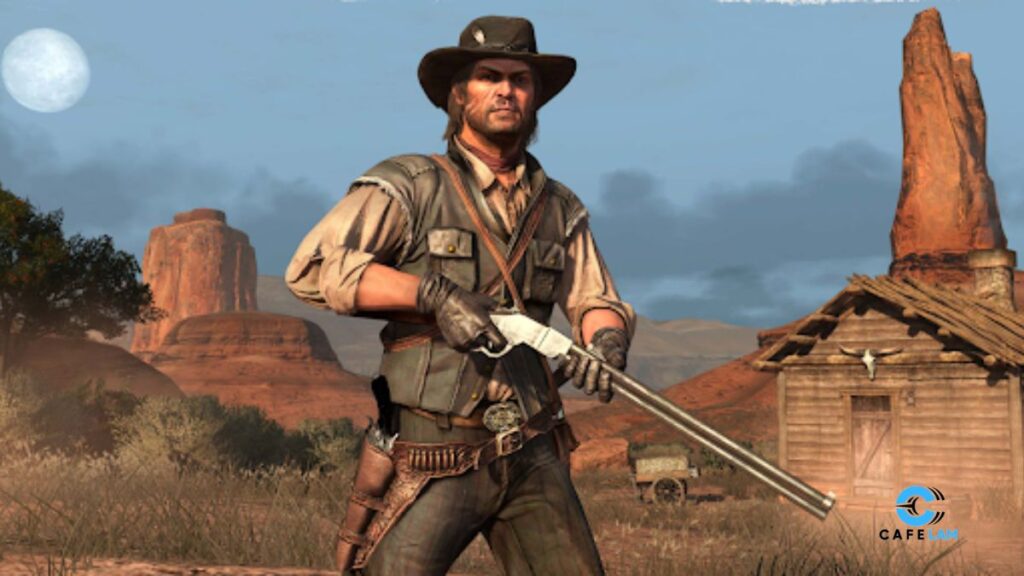Rockstar Games’ Red Dead Redemption 2 (RDR2) is not just a game, it’s a cultural landmark. RDR2, with its breathtaking landscapes and emotionally grounded narrative, has established the benchmark for what an open-world game should be. Aspiring developers and studios around the world look to it as a benchmark. But the question remains, how can a game development company replicate or even innovate upon such a monumental experience?
In this comprehensive guide, we’ll look at the complex controls, design philosophies, and cutting-edge technologies behind an epic open-world game. Whether you’re an independent developer or a member of a large-scale studio, comprehending these components is essential for creating your masterpiece.
Start With a World Worth Exploring
An epic open-world game begins with the world itself. It needs to be vast, diverse, and layered with interactive depth. Think about the American frontier in RDR2 every valley, mountain, and town tells a story without words.
To recreate this magic, begin with thorough world-building. Use real-world geography and culture as references, then add unique twists. Your environments should evoke curiosity. Include day-night cycles, dynamic weather, and ecosystems that respond to the player’s presence. This will turn passive exploration into active discovery.
Craft a Narrative That Stays With the Player
While world-building draws players in, storytelling keeps them engaged. RDR2 succeeded because it delivered a gripping tale of loyalty, betrayal, and redemption, seamlessly integrated into its open world.
Focus on creating a character-driven narrative. Build relationships between characters through branching dialogue, moral choices, and dynamic consequences. Don’t isolate story moments from gameplay. Instead, allow the story to emerge naturally from the world. Side missions, environmental storytelling, and NPC behavior should all contribute to the overarching plot.
Create Immersive Systems That Feel Alive
What makes an open world feel real? We need systems that replicate the essence of life. In RDR2, hunting, fishing, crafting, horse bonding, and NPC schedules gave players a sense of authenticity.
A game design company looking to build such immersion must prioritize interconnected systems. Design AI that reacts intelligently to changes in the world. Allow weather, economy, and crime levels to influence gameplay. The player’s actions should create ripples across these systems, encouraging replayability and investment.
Prioritize a Cinematic Presentation and Realism
Visual storytelling is as important as dialogue. RDR2 uses cinematic camera angles, lifelike animations, and realistic lighting to make every moment feel like a film.
Achieving this level of realism requires investment in high-quality assets, motion capture, and a powerful rendering engine. Use volumetric lighting, HDR textures, and real-time physics for environmental elements like wind, mud, and fire. Balance realism with art direction to ensure the game looks stunning while retaining a distinct style.
Implement Smart AI and Dynamic NPCs
One of the standout features in RDR2 is its intelligent NPC system. Townsfolk greet players by name, remember past events, and even interact with each other without player input.
To replicate this, develop a robust AI behavior tree. Include memory systems, personality traits, and schedules for NPCs. Encourage unscripted interactions maybe an NPC calls the sheriff after witnessing a crime or offers help if the player is injured. These emergent behaviors are what make the world feel lived-in.
Develop Meaningful Side Content and Activities
Not every moment in an open-world game should be driven by the main quest. Fishing, playing poker, treasure hunting, and bounty missions added richness to RDR2.
Your game should include side activities that reflect the world and characters. These don’t need to be high-stakes they just need to be engaging. Use them to reveal lore, build relationships, or simply allow the player to relax. Mini-games, collectibles, challenges, and random encounters are all tools to extend playtime meaningfully.
Integrate an Adaptive Mission System
In linear games, missions often follow a fixed path. In an open-world experience, flexibility is key. RDR2 allowed players to approach missions from different angles and in varying orders.
Design your missions with modular objectives. Use mission triggers that adapt based on the player’s actions or reputation. Consider incorporating stealth, diplomacy, and combat as optional paths. This not only gives players a choice but also encourages experimentation and replayability.
Choose the Right Game Engine and Tools
The foundation of your open-world game rests on your technology stack. RDR2 was built using Rockstar’s proprietary RAGE engine, optimized for vast terrains, AI simulation, and dynamic events.
For your project, choose a game engine that supports massive open worlds. Unreal Engine 5 and Unity are top choices. UE5, in particular, offers Nanite and Lumen for hyper-realistic environments. Pair this with world-building tools like Houdini, Quixel Megascans, and SpeedTree. A forward-thinking game development company invests not just in creative talent but also in the best tools available.
Polish, Optimize, and Playtest Relentlessly
Even the best ideas can fail without polish. RDR2 took years of refinement to ensure bugs were minimal and performance was consistent across platforms.
Establish rigorous QA cycles. Employ playtesting groups to gather feedback on pacing, difficulty, and world engagement. Optimize loading times, memory usage, and frame rates. Don’t underestimate accessibility features custom controls, subtitles, and difficulty settings broaden your audience. This phase may be time-consuming, but it’s essential for delivering a premium product.
Conclusion
Creating an open-world game like Red Dead Redemption 2 is a monumental task, but it’s not beyond reach. It requires a mix of technical excellence, creative ambition, and a deep understanding of what makes players connect emotionally with a virtual world.
Whether you’re a startup game development company or an experienced studio looking to push boundaries, let the success of RDR2 serve as both inspiration and challenge. The world of gaming craves the next outstanding open-world adventure. The only question is, will you build it?
Have you found this topic useful? For more informative content, check out the rest of our blog!







